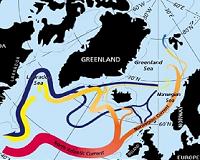| . |  |
. |
Sydney (AFP) Jan 11, 2011 Heavy rains blamed on the La Nina weather phenomenon that have brought death and destruction to Australia's northeast could stay for months, weather forecasters warned Tuesday. After emerging from years of devastating drought and water restrictions in 2009, Queensland enjoyed its wettest spring on record last year, making catchments more likely to overflow when further heavy rains hit. The Bureau of Meteorology said the wet conditions, which began in earnest in December and have wiped out crops, flooded mining operations and claimed at least 19 lives, could continue until the end of March. "The national outlook for the January to March period favours wetter conditions in the eastern half of New South Wales, southeastern Queensland and western Western Australia," the bureau said in its latest forecast. The bureau said the rainfall was the result of cool conditions in the central equatorial Pacific Ocean associated with the current La Nina -- a disruptive weather event associated with rains. "The southeast, roughly one-quarter of Queensland... has about a 60 to 75 percent likelihood of getting above the median three-month rainfall for January to March," climatologist Grant Beard told AFP. Beard said the December to March period was traditionally the wettest of the year for Queensland, known as the Sunshine State, and much of the region had endured record rainfalls in December. Experts said even if subsequent downpours were not extreme, they could cause major problems because catchments and rivers were already full to overflowing. La Nina, or "girl child," is characterised by unusually cool ocean temperatures in the eastern equatorial Pacific and has been associated with strong rainfall in Asia and Australia, bitter cold snaps in North America, and drought in South America. It is the counterpart to the El Nino weather pattern, generally associated with drier conditions in Australia. "The Queensland floods are caused by what is one of the strongest (if not the strongest) La Nina events since our records began in the late 19th century," said Professor Neville Nicholls, president of the Australian Meteorological and Oceanographic Society. Nicholls said whether the flooding was related to global warming was unknown. Forecasters are predicting intense rain and thunderstorms on Tuesday and Wednesday for southeastern Queensland. "Heavy falls will lead to flash flooding and will worsen existing river flooding," the bureau said in a warning.
Share This Article With Planet Earth
Related Links Weather News at TerraDaily.com
 Scientists find 'drastic' weather-related Atlantic shifts
Scientists find 'drastic' weather-related Atlantic shiftsGeneva (AFP) Jan 4, 2011 Scientists have found evidence of a "drastic" shift since the 1970s in north Atlantic Ocean currents that usually influence weather in the northern hemisphere, Swiss researchers said on Tuesday. The team of biochemists and oceanographers from Switzerland, Canada and the United States detected changes in deep sea Atlantic corals that indicated the declining influence of the cold northern Labr ... read more |
|
| The content herein, unless otherwise known to be public domain, are Copyright 1995-2010 - SpaceDaily. AFP and UPI Wire Stories are copyright Agence France-Presse and United Press International. ESA Portal Reports are copyright European Space Agency. All NASA sourced material is public domain. Additional copyrights may apply in whole or part to other bona fide parties. Advertising does not imply endorsement,agreement or approval of any opinions, statements or information provided by SpaceDaily on any Web page published or hosted by SpaceDaily. Privacy Statement |